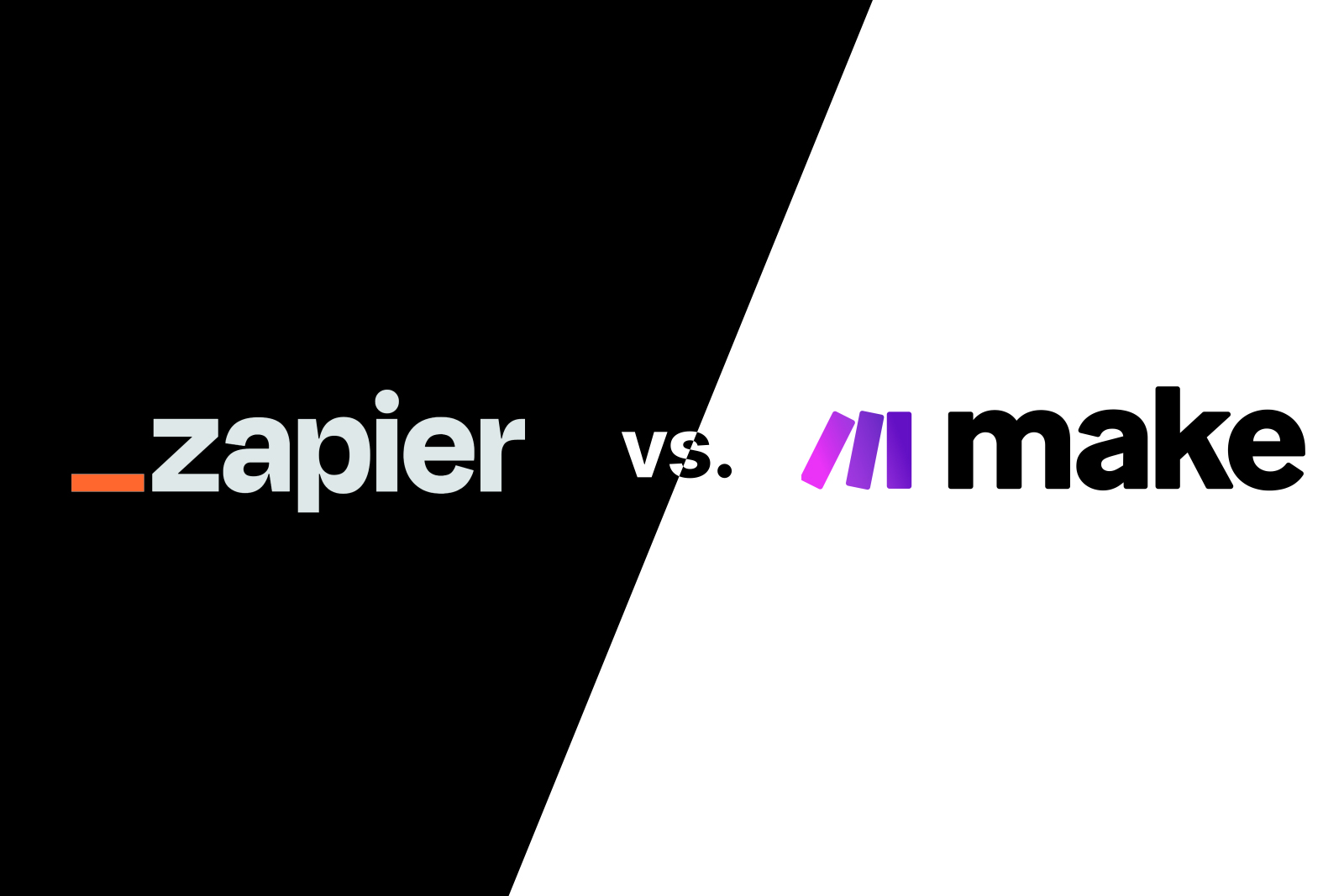Automation platforms have become indispensable tools for businesses and individuals looking to streamline their workflows and increase productivity. Zapier and Make are two popular automation platforms that offer a wide range of features and integrations. In this article, we’ll provide a detailed comparison of Zapier and Make to help you decide which platform is best suited for your needs.
- Overview
Zapier: Zapier is a popular cloud-based automation platform that allows users to create automated workflows, called “Zaps,” between different apps and services. Launched in 2011, Zapier boasts over 3,000 app integrations and a user-friendly interface that makes it easy for non-technical users to set up automations.
Make (Integromat): Integromat, founded in 2012, is a robust automation platform that enables users to create complex, multi-step integrations called “Scenarios” between various apps and services. With over 650 app integrations, Make offers powerful automation capabilities and an intuitive visual builder that appeals to both technical and non-technical users.
- Ease of Use
Zapier: Zapier is known for its user-friendly interface and simplicity, making it easy for non-technical users to create automations quickly. Users can set up Zaps using a simple, step-by-step process that involves selecting triggers, actions, and filters.
Make: Makeoffers a visual builder that allows users to design and manage their automation workflows in a graphical interface. This visual approach can be more appealing to some users, but it may also have a slightly steeper learning curve compared to Zapier.
- Integrations
Zapier: Zapier currently supports over 3,000 app integrations, making it one of the most extensive automation platforms in terms of supported apps. This vast range of integrations allows users to automate workflows across a wide variety of tools and services.
Make: Make supports over 650 app integrations, which is fewer than Zapier. However, Make still offers a wide range of integrations with popular apps and services, and they are continually adding more.
- Pricing
Zapier: Zapier offers a free plan with limited functionality, as well as several paid plans that provide more features and higher limits. Paid plans start at $19.99 per month for the Starter plan and go up to $599 per month for the Company plan.
Make: Make also offers a free plan with limited functionality, in addition to multiple paid plans with increased capabilities. Paid plans start at $9 per month for the Basic plan and go up to $299 per month for the Platinum plan.
- Advanced Features
Zapier: Zapier provides features like multi-step Zaps, conditional logic, and code-based actions using JavaScript and Python. These advanced features allow users to create more complex automations and customize their workflows.
Make: Make offers advanced features like data transformation, error handling, and built-in support for APIs. Users can also create custom integrations using HTTP, JSON, and XML modules. These advanced features make Make more suitable for users who require complex and highly customized automation workflows.
Both Zapier and Make are powerful automation platforms that can help streamline workflows and improve productivity. The choice between them largely depends on your specific needs and preferences. If you’re looking for a user-friendly platform with an extensive range of integrations, Zapier might be the better choice. On the other hand, if you require advanced features and more complex automations
